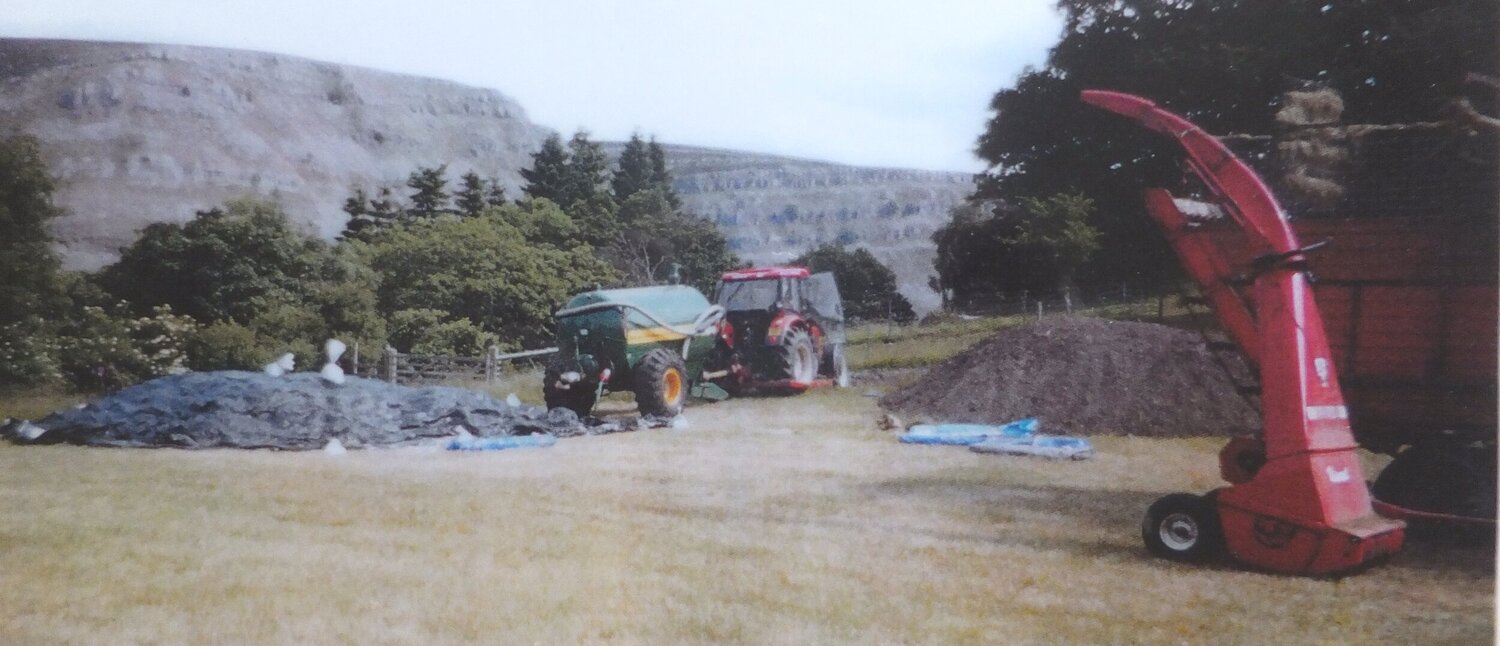Using Vacuum Silage Principles
The main page is an account of the complete approach to Yalland Vacuum Compressed Silage. Following discussions with other farmers on The Farming Forum, it may be the case that some aspects of the Yalland approach can be adapted and used to improve current silage techniques and therefore improve silage quality. Quite a few principles are not used by many farmers, even though they are backed up by scientific research.
The unconventional principles to improve silage
Design the front clamp face for the expected feeding out rate
Always keep grass/silage clean
Always cut a standing sward of grass in the afternoon
Always wilt grass for one day, but not more than one day
If possible use flail chop both days rather than mower and precision chop
Always use new clean sheets to completely envelope grass for silage
Always sheet up one day’s forage and do not re-open until feeding out
Always completely seal a day’s worth of forage (Silage Sheet Seam)
Always pump down the stack within hours of sheeting down
Allow the Carbon Dioxide Response to pickle silage for two days
Allow the Carbon Dioxide out after two days, re-seal and weight down
Protect the sealed sheets with whatever is necessary and do not let them billow or flap at any time.
Keep weight on the clamp and have weights just behind the front face when feeding out.
Cut away silage faces when feeding out - never lift or disrupt stored silage.
Always cover the front face with the top sheet when not cutting away silage and weight it down (no billowing)
If there are any of these principles that are not being used in your system, then adopting any one of them will start to improve the quality of silage produced from grass.
The One Day Silage Bay
This idea came out of discussions on The Farming Forum. It emerged that a standard team of silage contractors would bring in up to 300 tonnes of grass in one day. That makes about 500 cubic metres of silage. So an enclosure of 600 cubic metres can safely contain one day of grass.
The front face for a conventional clamp can conveniently be 8 m wide and 3 m tall giving an area of 24 square metres. That is appropriate for a dairy herd of at least 70 cows so that feeding out progresses at a rate of at least 150 mm per day (6 inches). Smaller feed out rates require smaller front faces. I suggest this is a maximum size for a One Day Bay and others should be smaller.
The other major consideration is sheeting and sealing. This design can be serviced with just two sheets. A 4 m x 50 m side sheet can run from one back corner across the back, along one side and the excess stored near the front whilst filling with grass. The other 14 m x 25 m sheet can run from the floor, up one side and be stored ready to be the top sheet when full of grass. The back corner where the sheets meet will need to be secured and taped to seal the sheets. When almost full, the spare side sheet needs to be underlapped at the front and taped to the main sheet where they meet at a front corner. When full, the top sheet can be drawn over and sealed using Silage Sheet Seam along the top of the back, the top of one side, down the front slope and across the bottom of the front as shown in the image using between 43 m and 50 m of Sheet Seam.
It is suggested that farms should have a bank of One Day Silage Bays rather than anything bigger so that all forage is dealt with in the best way, one day at a time. This can be especially useful in years with difficult weather.
Note that the floor seals on this design will not be good enough to apply a strong vacuum, but a light vacuum to remove excess air could be applied to good effect. The compression aspect of a strong vacuum may not be needed with this design.
One Day Silage Bay sealed with tape and Silage Sheet Seam

